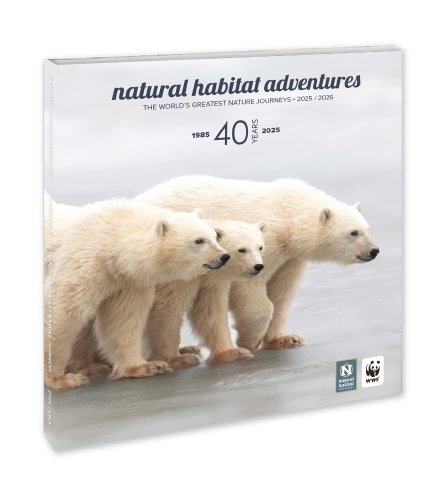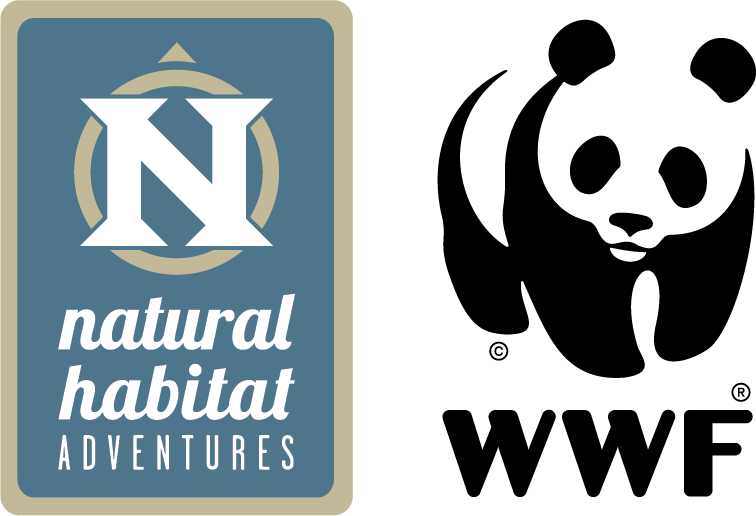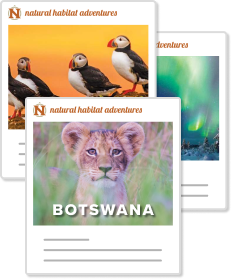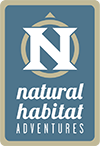
The need for a selfie in the perfect landscape to post on social media platforms has the potential to harm wild beings and spaces.
The ubiquitous social media in our lives has its benefits, including allowing us to interact quickly with our loved ones, network with our colleagues and share information almost instantaneously. Nevertheless, there are drawbacks; such as the possibility of cyberbullying, the dissemination of false information, negative impacts on mental health due to comparisons with others on the platforms and issues with privacy. Regarding nature, the drive for a dramatic selfie with a wild animal or the need for a shot of the perfect landscape has the potential to harm wild beings and spaces.
But social media has its upsides, too. Recently, researchers created a deep learning method to analyze social media images taken within protected green spaces to gain insights on human activities within these areas in order to monitor their ecological impacts.
In addition, Facebook and Instagram have demonstrated their worth. They can boost wildlife conservation efforts through public awareness and engagement. In fact, one mammal’s similarity to a domestic feline has attracted thousands of followers to Internet feeds about wildlife conservation. This online appeal is linked to the global phenomenon of cat images, memes and videos that go viral.

On the Internet, cat memes—amusing items that spread widely online through social media—gained popularity in the mid-2000s, but some argue that their origins stretch back to at least the 18th century.
Searching for the perfect selfie could put nature at risk
The advent and prominence of social media today has directly and indirectly influenced the natural environment, including disruptions to the breeding and feeding patterns of animals and the trampling of endangered plant species.
For example, social media groups have made it easy for people to identify the breeding grounds of birds and other wildlife species and the locations of endangered plant species. The quick spread of such information can cause a major influx of people into an area that would otherwise have remained untouched. As a result, animal breeding and feeding patterns are disturbed, and there is an increased risk for poaching, predation and the spread of diseases. Furthermore, the use of call playbacks, drones or the handling of wild animals for photographs leaves lasting impacts.
That’s why researchers from Edith Cowan University, Curtin University and Murdoch University in Australia and the Department of Biodiversity, Conservation and Attractions in the Government of Western Australia’s Kings Park Science Program are advocating for the instigation of codes of ethics and tighter controls around the promotion and use of fauna and flora on social media. It seems to be highly needed because a diverse range of animals and plants are feeling the negative effects of social-media-related behavior.

Unfortunately, the handling of wild animals for photographs to post on social media can leave a lasting, negative impact on wildlife.
One of those animals is the blue-crowned laughingthrush, a critically endangered bird which has shown altered nesting behaviors due to disturbances from photographers.
Orchids, too, are highly susceptible to habitat changes and trampling, and many orchid communities are threatened by increased recreational activities and tourism promoted through social media. In fact, of all flora, orchids are particularly popular content for social media posts, and there are social media groups—with upwards of 10,000 members—dedicated to posting photos of native orchids. But these plants can have highly specific interactions with a single species of fungus or pollinator. Overvisitation, then, not only has a direct impact on orchids from trampling, but it can indirectly impact the integrity of the flowers’ ecological interactions; leaving orchids vulnerable to population collapse.
And the dangers are not just air- and land-based: flash photography and disturbances from divers can negatively affect marine life, such as whale sharks and other sensitive aquatic organisms.

The stunning blue-crowned laughingthrush lives only in Wuyuan County in China’s Jiangxi Province. Brown-backed and yellow-bellied, with a black bandit’s mask and a bright-blue crown, the bird breeds in stands of very tall, old trees near rural villages.
This growing use and omnipresent nature of social media means that it is impossible to control or restrict access to nature hot spots or species that are the target of social media content. Consequently, the Australian research team believes that the best hope relies on a mix of on-ground management or access restrictions at key public sites, buy-in from a variety of stakeholders and an increase in education promoting appropriate behavior in natural areas. They propose a framework that considers species most at risk from social media activities, especially those that are rare, sessile and have restricted ranges.
This isn’t a new concept. Many nature groups and societies already have well-established codes of ethics for responsible conduct, including for activities such as bird-watching, bird photography and orchid photography. Such codes of conduct are an excellent starting point, but they are nonbinding and rely on individuals doing the right thing or peer pressure against inappropriate behavior. However, state the researchers, this may remain the most realistic way to reduce impacts on biodiversity, asking questions of any groups that do not have or adhere to such codes.
Taking wildlife-feeding selfies could now be an evolutionary force
There’s already abundant evidence of the perils of giving handouts to wild animals. Bears that get hooked on human food are shot when they become a nuisance. Feeding sites can become breeding grounds for disease when animals pack together. Then there’s the occasional time when animals attack while they are being fed by humans. And treats can be unhealthy.

Some of Dublin’s most famous residents are the fallow deer that live in Phoenix Park in Ireland. The deer have been living there since the 17th century, when they were introduced for hunting. These days, the animals live out their lives peacefully in the park.
Now there’s another reason: it might cause a species to evolve toward being more aggressive toward humans.
Despite all these reasons and the pleas of wildlife managers, people persist in feeding wildlife. Perhaps it’s the delusion that they are helping an animal, a movie-fueled fantasy about communing with nature or a stunt in pursuit of a viral Instagram post. Whatever it is, in some places the problem has only gotten worse.
The 600 fallow deer that live in Phoenix Park on the outskirts of Dublin, Ireland, are a case in point. In the past, the deer were skittish, keeping their distance from humans. But that has changed within the last decade, as more of the estimated 10 million visitors that come to the park each year decided to feed the deer.

Mozambique has an estimated population of 10,800 elephants, a number that has remained stable over the past five years despite threats to the species. Surprisingly, there’s a shift toward elephants without tusks in Mozambique, a condition tied to a history of elephant poaching for ivory.
This popular activity offered scientists at the University College Dublin a ready-made experiment for getting a more complete picture of how wild animals were affected when humans started feeding them: the deer were contained in a small, 2.7-square-mile space; they were intensively monitored; more than 80% of them could be individually tracked by unique ear tags; and there was an enormous flow of people, some of them trying to feed the deer everything from carrots to cookies.
Among the key questions posed by the scientists was this: did individual personalities among the deer influence their willingness to take food from people? And if so, was there a possible evolutionary advantage gained by the deer more willing to take part in that selfie?
There is already plenty of evidence that human activities, such as hunting, can exert evolutionary pressure on species. For instance, scientists recently reported a shift towards elephants without tusks in Mozambique, a condition they tied to a history of elephant poaching for ivory.

In a recent study, not all the fallow deer in Phoenix Park acted alike. A quarter of the deer were “consistent beggars.” Sixty-eight percent were “occasional beggars,” and 8% rarely approached people for food.
When it comes to taking food from people, however, is the behavior simply learned by any member of a species presented with the opportunity? Or were some deer better beggars?
To answer those questions, the scientists spent several months in the summers of 2018 and 2019 at Phoenix Park watching people feed the deer. They took note of which deer took food from people, even eating it directly from someone’s hand.
It turned out that not all deer acted alike. A quarter of the deer were what scientists dubbed “consistent beggars.” Those animals would approach people for food roughly 30% of the time they were watched by researchers. They received food on average more than once every two hours for male deer and roughly every seven hours for females. By comparison, 68% of the deer were “occasional” beggars; and 8% rarely approached people for food.

Heavier fawns at Phoenix Park were more likely to survive. Mothers who took food from people more frequently gave birth to fawns that weighed a half pound to one pound more than the fawns born to deer with less of an appetite for our food.
To see if these behavioral differences gave any of the deer an advantage, the scientists compared the weight of 134 newborn fawns from does with different feeding habits. In the past, the same research group found that heavier fawns at the park were more likely to survive. It turns out that the mothers who took food from people more frequently gave birth to fawns that weighed between 0.66 and 1.1 pounds more than the fawns born to deer with less of an appetite for human food, state the researchers in the Journal of Animal Ecology in August 2022.
These weight differences could translate into a growing number of deer with a behavioral disposition to seek food from people. If actions are not taken, warn the authors of the report, in 10 years we could end up with deer that consistently harass people, as the boldest individuals have been selected for, which clearly holds enormous risks for the animals and people involved.
While the study focused on a small population of a single species—and didn’t track the animals long enough to see if the feeding exerted enough evolutionary pressure to shift the herd’s behavioral makeup—the problems at the park could apply to other places. It stands to reason that if this is occurring in this population, then it is very likely also the case across other populations and species, as well.

People go to nature reserves for many reasons, such as to hike or to enjoy the views. Too many visitors, however, could lead to overcrowding and environmental harm.
Monitoring nature reserves by deep learning and social media
Many people visit nature reserves for various reasons, such as to hike, to keep fit or to enjoy the views. Despite these benefits, having too many visitors in a place could lead to overcrowding and the thwarting of conservation efforts. Consequently, to implement more effective land-use management strategies for crowd control, governments need to gain insights into how green spaces are used.
Since most nature reserves cover large land areas, however, using conventional field surveys to monitor human activities can be costly and time-consuming. So, a research team of environmental biologists at the National University of Singapore developed a technique to process social media images taken within protected areas (PAs) as a proxy for identifying human activities within them.
By parsing these images through a deep-learning, image-tagging model, the human activities depicted were automatically detected. These tagged images were then subsequently grouped into distinct categories.

In one study, it was found that social media images taken in Europe tended to be of historic castles, such as the Eilean Donan Castle in Scotland.
After analyzing 87,090 photos from 2,813 PAs in 207 countries, the researchers made some interesting observations. Most notably, distinct clusters of activity types across PAs aligned closely with expectations. For instance, there were many photographs of animals and plants in Southeast Asia PAs, while European PAs had numerous photographs of historic castles. Also, PAs within the same country showed similar activities, even if they had different physical environments.
The National University of Singapore scientists say while there have been similar studies, this is possibly the first that tries to investigate human activities within PAs on a global scale. It demonstrates the utility of social media and deep learning in empowering researchers to investigate pressing environmental issues at a much larger scale.
Publishing their findings in Scientific Reports in June 2024, the team says that it hopes that this technique can be adopted by nature organizations to monitor land-use patterns in nature reserves efficiently and cost-effectively, enabling more targeted conservation efforts to protect ecosystems despite increasing visitor numbers.

There are benefits to using smaller carnivores as flagship conservation species to communicate the aims of scientific research in rapidly urbanizing areas. Employing aesthetic species, such as caracals, is an effective way to capture public attention.
Boosting wildlife conservation efforts by social media posts
Caracals, the wild cats with distinctive tufted ears that are native to Africa, have now demonstrated how social media can harness support for the predators, which some farmers poison and shoot.
It’s well known that better public engagement is key to achieving conservation goals, especially in biodiversity hot spots. Cape Town, South Africa, is located within such a hot spot and is home to the caracal, an elusive mammal regarded as vermin by livestock farmers elsewhere in South Africa.
So, in 2014, the Urban Caracal Project (UCP) was set up to explore caracal ecology, and social media was used to influence awareness and perceptions towards caracal conservation in this urban setting. The project communicates its works in several ways—including via a website—but most interactions are through social media.

A range of species are both endangered and unique to biodiversity hot spots. Unfortunately, these same areas are increasingly urbanized and understudied, like Cape Town, South Africa.
Google Trends was used to assess the global popularity of caracals from 2004 to the present day, before and after the UCP was set up. Researchers compared the interest in caracals with that of a similar African wildcat—the serval. They also used recent Facebook and Instagram data to analyze all material UCP had posted online and looked at direct public engagement, such as reported caracal sightings, rescues and finds of dead wildcats.
Results, which were published in the peer-reviewed journal Environmental Communication in November 2024, showed a doubling in search interest in the term caracal since the UCP was launched. This represents a 91% increase compared to that for servals, which rose by 76% in the same period. The authors say this suggests that the project has helped raise awareness of the caracal worldwide.
Other findings showed that the project now has more than 16,800 Facebook followers and more than 7,300 followers on Instagram, figures that represent “micro-influencer” status. Most are from South Africa, but they also include those in India, the United Kingdom and the United States.

Servals are wild cats native to Africa. Widespread in sub-Saharan countries, servals inhabit bamboo thickets, grasslands, moorlands and wetlands. Servals have spotted and striped coats, while caracals have plain coats. Servals are taller than caracals, but caracals are more sturdily built.
The UCP has received interactions and traffic from accounts linked to the “Big Floppa” meme inspired by an overweight caracal born in Kyiv, Ukraine. This links to the popularity of “cats on the Internet,” according to the authors. They also say caracal deaths reported by the public—often via WhatsApp and social media—allow them to perform postmortems and to assess threats to the caracal population and roadkill patterns. Tissue analysis from these animals has revealed that caracals are exposed to pollutants and pesticides, such as rat poison. Samples have even been collected from otherwise unreachable areas, thanks to this citizen network.
The sightings and Facebook comments also provide conservationists with useful information on how caracals respond to humans. Most encounters occur on paths or roads with the caracals described as “chilled” or “calm” before they quickly move away. The most common positive adjective used in Facebook comments is “beautiful.” “Sad” tended to describe a death or a population threat. This demonstrates, add the authors, the extent to which social media engagement has led to people caring about caracal welfare.
Savoring social media successes
Despite the downsides to social media users disturbing wild animal lives, encroaching on natural habitats and feeding wildlife, photography can be an incredibly powerful conservation tool, cultivating and enhancing environmental activism, nature-based connections, and providing opportunities for education and stewardship.

The global phenomenon of searches for “cats on the Internet” can be harnessed to increase public interest in urban ecology and to leverage conservation action.
The broad audience outreach of social media also means that the content can be harnessed by land-management practitioners and scientists for conservation purposes, essentially “data mining” it or actively engaging with citizen scientists to collect data as a by-product of their social media activities. For example, social media has resulted in the identification of several new plant species, and the caracal study adds to our understanding of the various ways in which the public can participate in science. It shows how charismatic species can contribute to conservation and public awareness of biodiversity in urban areas.
Most of us have a love-hate relationship with social media. I like to think that, eventually, the love side will win out.
Here’s to finding your true places and natural habitats,
Candy


























